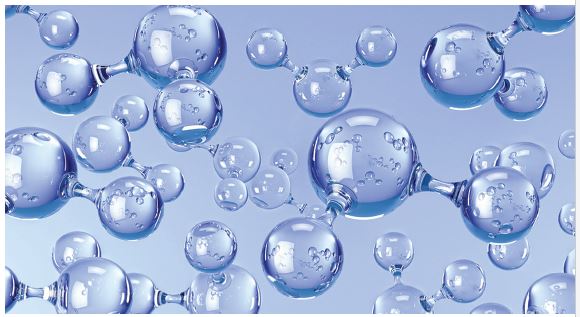Water & Spray Package Corrosion
Written on: June 1, 2023 by W. Stephen Tait
Part 2
Hello, everyone. In this issue, we’ll complete the discussion of water’s role in spray package corrosion.
Water-corrosion is a complex, multi-step process. For example, one type of aluminum pitting corrosion involves multiple steps:
1. Water reacts with aluminum to form small areas of aluminum-hydroxide gel on top of the package-metal or the metal under the polymer coating/laminate film
2. The gel is a semi-permeable membrane allowing only water and specific ions to pass into and out of the gel
3. Aluminum metal pitting corrosion initiates under the gel
4. Electrons generated by the pitting corrosion (under the gel) move through the metal to reduce water and formula ingredients outside the gel layer
5. Osmotic pressure pulls more water and negative ions (such as chloride ions) under the gel to support the pitting corrosion
One can see from this example that water is simultaneously performing roles of:
• Initiating corrosion
• Creating a more corrosive environment
• Acting as a media for transporting ions
Pitting corrosion is rapid corrosion that leads to leaking packages; therefore:
• Water is necessary to both initiate and support pitting corrosion as a transport media to remove corrosion products inside the pit
• Water movement into a pit also maintains the microenvironment inside the pit
• Water transports electrochemically active ions and molecules to be reduced in the surrounding area outside the pit, thus also allowing pitting corrosion to continue
Water transports the materials generated by pitting corrosion (corrosion-products) to the area outside of the pits. This transportation prevents accumulation of corrosion-products that would fill up the pits and subsequently slow the rate of pitting corrosion. Thus, water allows pits to continue growing at a high rate through the package-metal until it leaks.
Chemical analysis of the material inside of pits has shown the presence of negative ions, such as chloride, sulfate or nitrate (to name a few). The presence of these ions is often mistakenly thought to indicate that the negative ions cause the corrosion. However, water transports the negative ions to balance the electrical charge inside the pit. In other words, the water is the reason why pitting corrosion initiates and continues because the negative ions transported by water allow the pitting corrosion to continue until the package-metal is perforated.
The liquid inside an active pit has a significantly different chemical composition from a formula. This microenvironment is created and maintained when water hydrates the metal ions ejected (by corrosion) from the metal. Hydration also lowers the pH inside the pit to four, and metal ion hydration also buffers to a pH of four, thereby maintaining the microenvironment inside the pit.
Water transports ions and molecules electrochemically to the support area surrounding a corroding pit, thereby supporting the pitting corrosion. The amount of area (outside the pit) needed to support pitting corrosion is a complex interaction between your formula’s chemical composition, the type of spray package-metal and the condition of the metal surface (e.g., is the package-metal coated, uncoated or laminated). Typically, a coated metal needs more area to support a pit than an uncoated metal.
Water needs to be in the liquid state to perform its various corrosion roles, and in several instances, water is consumed in a given step.
How much water is needed to form liquid water?
From a thermodynamic perspective, it only requires around 90 water molecules to form liquid water. However, more than 90 water molecules are needed to sustain corrosion because water is consumed during corrosion. In addition, measurements of water-layer thickness in vapor areas indicate that corrosion occurs under an approximately 30-molecule thick layer of water. In other words, not much water is necessary for spray package corrosion.
As mentioned in Part One, there is an approximate 62% probability of corrosion when the appropriate corrosion tests are not conducted. Consequently, not conducting corrosion tests on new formulas and derivative formulas is a high-risk situation that could lead to unexpected corrosion with subsequent spray package leaking.
